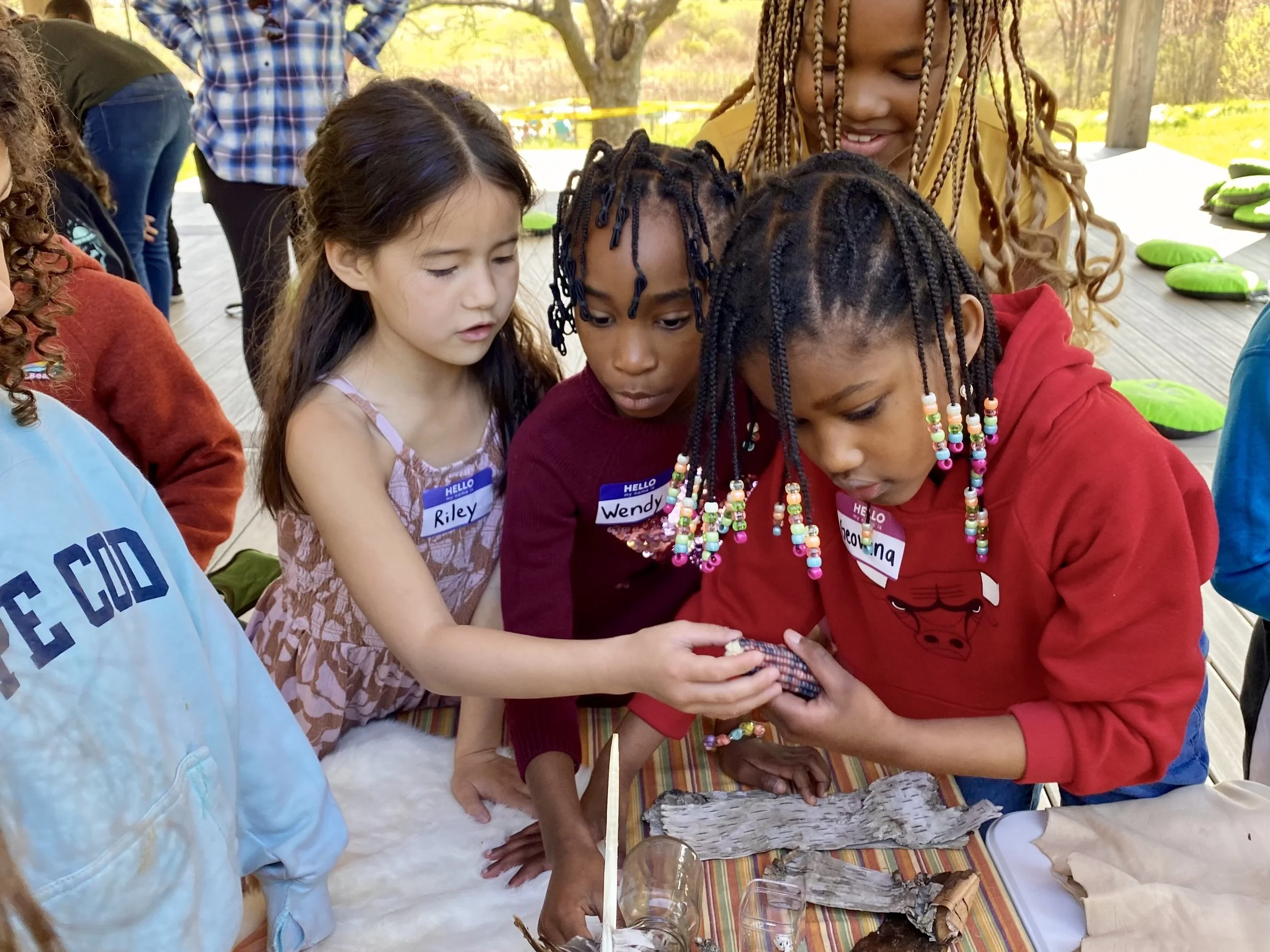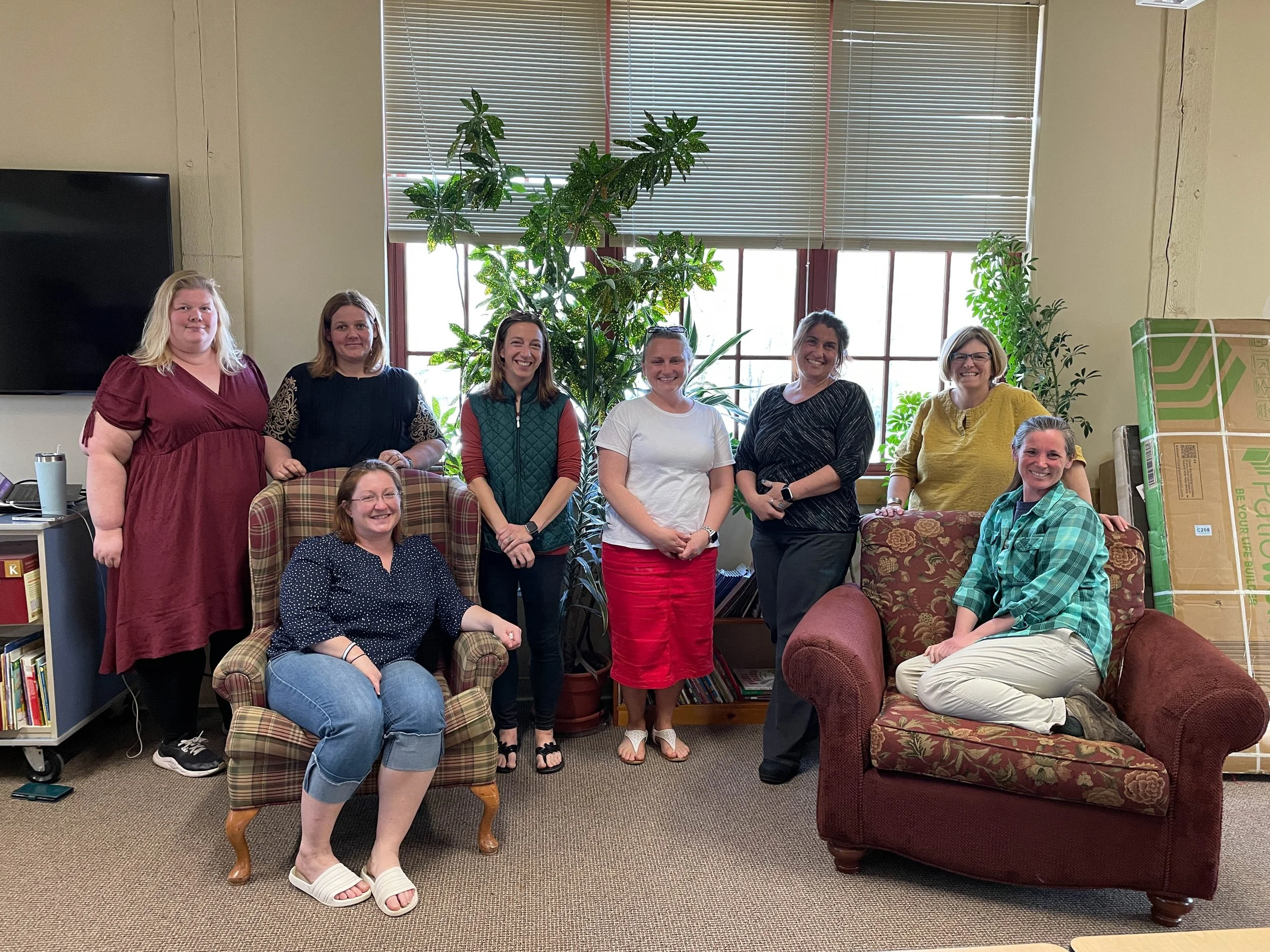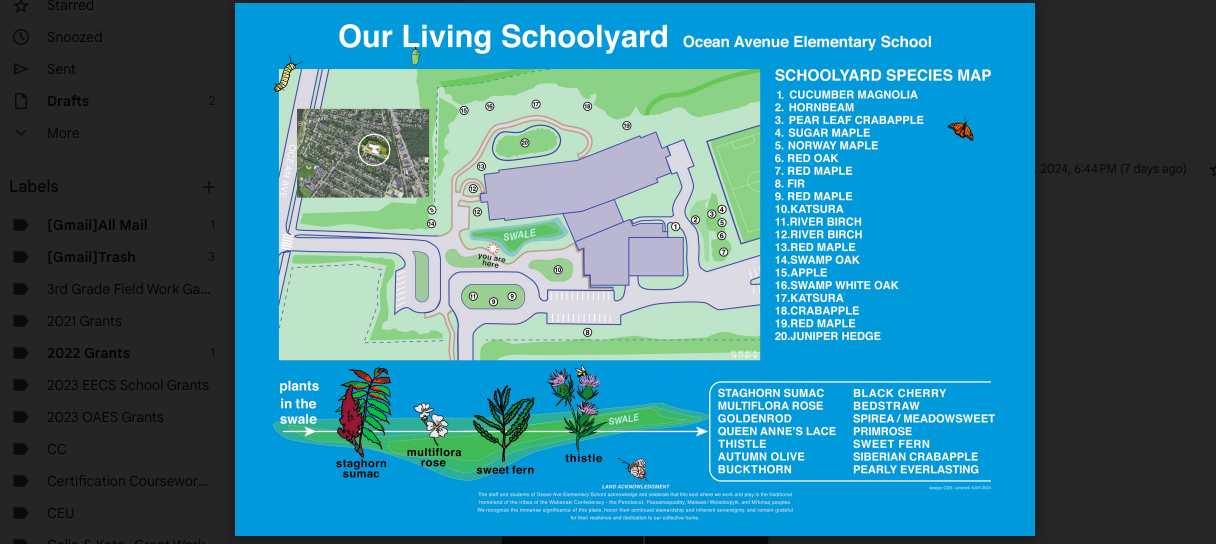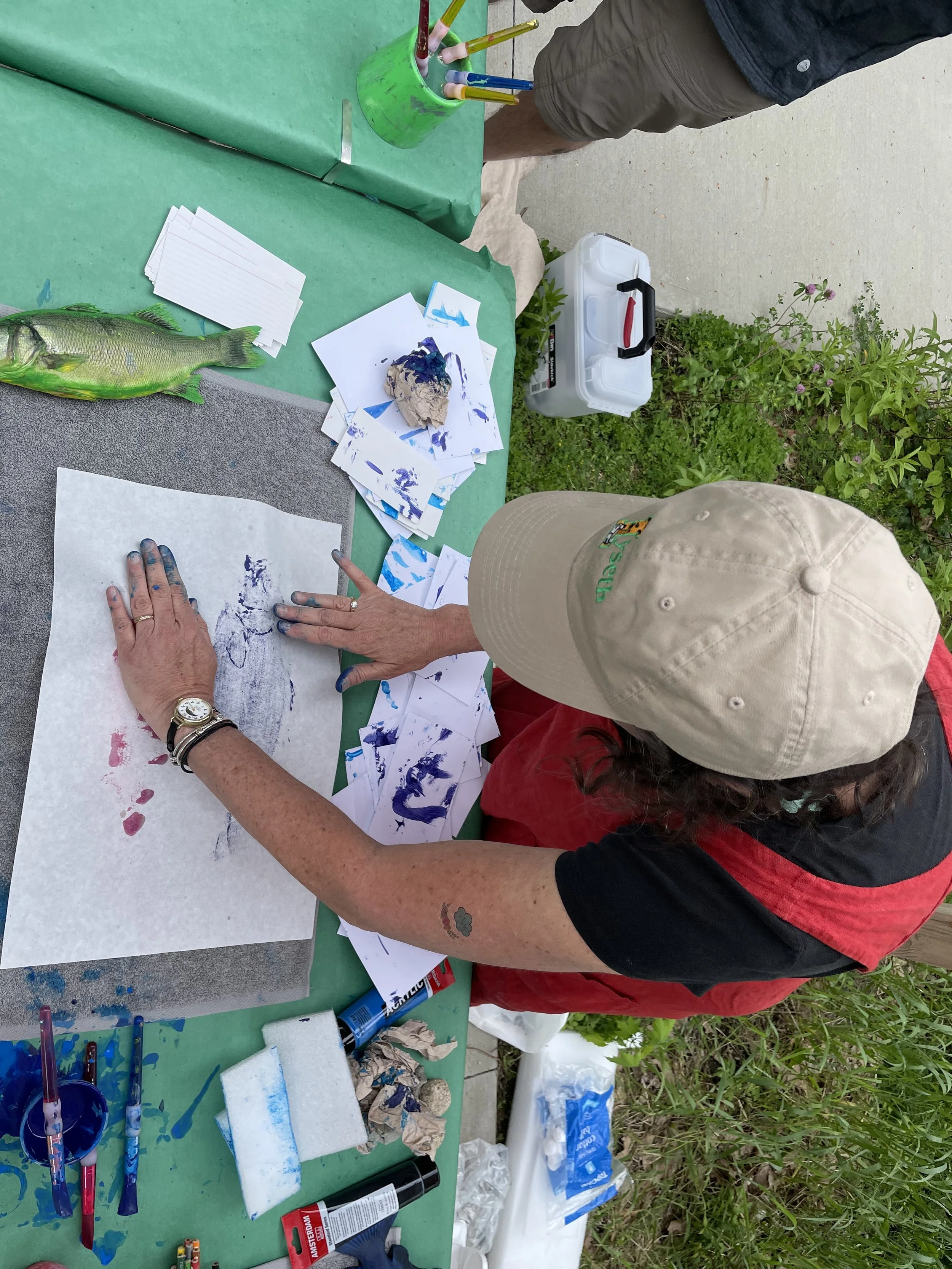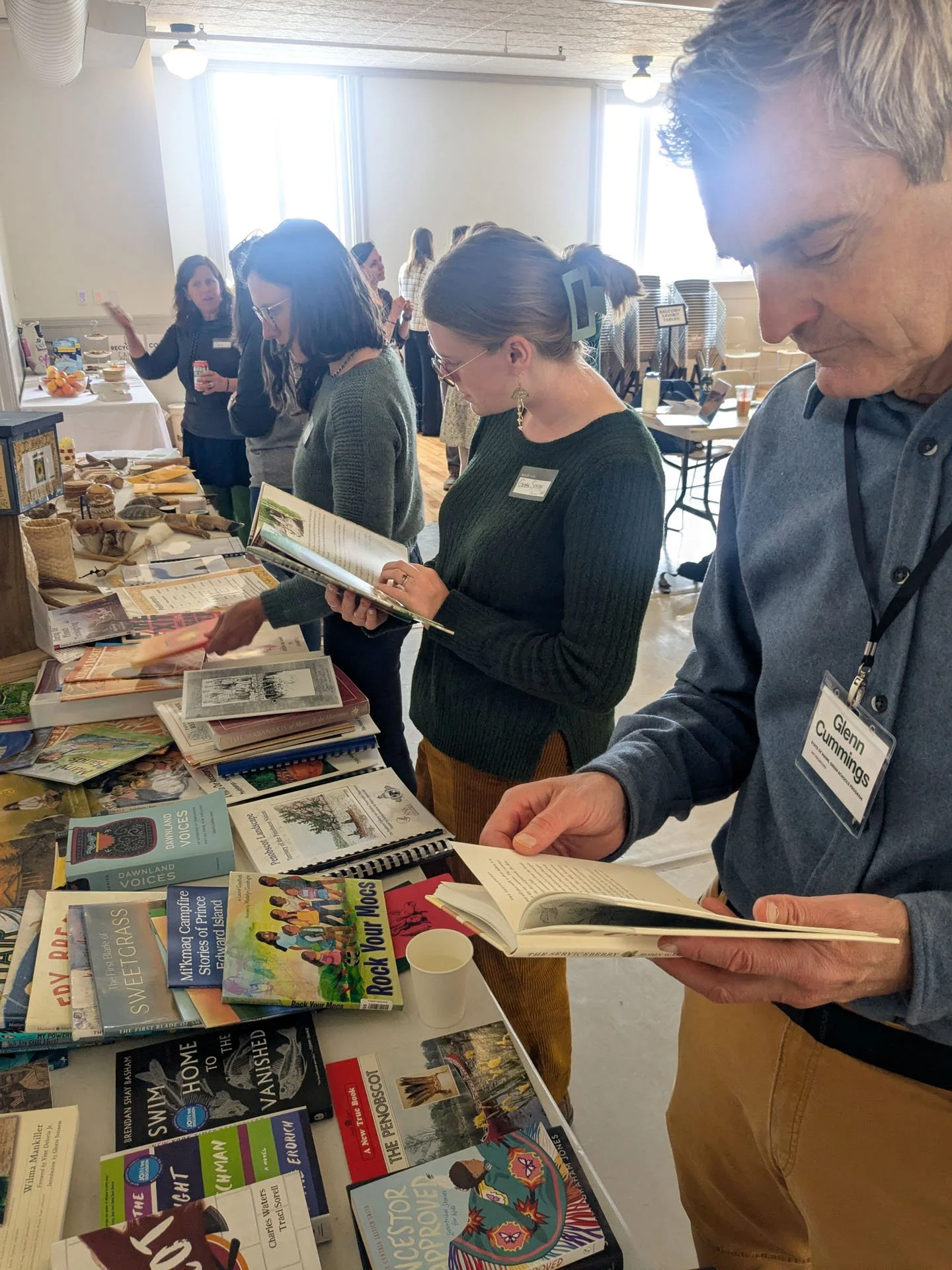
SUPPORTING EDUCATORS
Expanding Access to Wabanaki Studies
About Wabanaki Studies
The Panawahpskek (Penobscot) Nation, Peskotomuhkati (Passamaquoddy) Tribe, Mi’kmaq Nation, (Wolastoqiyik) Houlton Band of Maliseet Indians, and Abenaki (collectively known as the Wabanaki Nations) have lived for thousands of years in the land we now call Maine. They are known collectively as the Wabanaki, or "People of the Dawnland." Despite colonization and attempted genocide—including the forced removal of their children—the Wabanaki Nations have endured as sovereign and self-determining peoples, with distinct and diverse languages, cultures, governments, and economic structures. (Source: Wabanaki Studies Framework)
At MEEA, we strive to expand access to Wabanaki Studies at public schools and environmental education organizations so that all Maine students and educators can access Indigenous knowledge inside and outside the classroom. We connect Wabanaki educators with the wider environmental education community through providing funding, professional development workshops, and community partnerships.
The Wabanaki Nations’ traditional ecological knowledge continues to expand and challenge the field of environmental education to approach teaching about the natural world in a more holistic, interconnected, and interdisciplinary way. Wabanaki Studies promotes Maine students to have a deeper connection to the environment in which they live and learn; and to understand the history and culture of the people who have stewarded these lands for time immemorial.
We extend are gratitude and respect to Panawahpskek citizens Brianne Lolar and Kaya Lolar for their knowledge and efforts expanding Wabanaki studies; and to all of the Wabanaki advisors and educators who share their stories, cultural practices, and rich histories through the materials available on this webpage and beyond.
Where do I start? Check out:
Follow Wabanaki Studies Education on social media for regular updates on Wabanaki studies opportunities!
Looking for funding for your Wabanaki Studies project?
MEEA’s Mini Grants for Outdoor Learning provide up to $1,500 to public school teachers in Maine for outdoor learning and Wabanaki studies projects. Applications open mid-September 2025.
Wabanaki Studies Outdoor Education Projects
Wabanaki Studies Professional Development Workshops
Check back soon for Fall 2025 upcoming workshops!
FREE three-part workshop series for school-based educators of all grade levels and subject areas
Facilitated by Panawahpskek citizens
Brianne Lolar, Wabanaki Studies Specialist, Maine DOE
Kaya Lolar, Policy and Wabanaki Studies Coordinator, MEEA
Join a cohort of educators from your region to participate in three interactive workshops (two online, one in-person) and support one another as you integrate Wabanaki studies into your education work. This material represents a continuing collaborative effort between the Wabanaki Nations, Indigenous and non-Indigenous educators, districts, and other organizations.
Wabanaki Studies is the #1 topic that Maine environmental educators say they need more support to teach to their students. We’ve served over 350 educators so far in Hinckley, Falmouth, East Machias, Camden, York, Ashland, and Bangor. Want to host a workshop in your community? Email us.
Quotes from Educators
Wabanaki Studies Resources
A great starting point in your Wabanaki studies journey. This guide supports educators in transforming the way we work with and support Indigenous and non-Indigenous children and families.
Grades K - 12 educator guides to support learning about topics such as languages, economics, civics and government, outdoor learning, and more.
Wabanaki Studies learning modules for Pre-K through 12th grade.
Info about the creation and implementation of the Wabanaki Studies law (LD 291) that requires all Maine schools to teach Wabanaki studies. Plus additional resources.
A non-exhaustive list of Wabanaki educators for hire to guest speak at schools and in communities.
Project-based Learning Modules by Grade Level
Wabanaki educators and community members have created a multitude of Wabanaki Studies resources for all grade levels and subject areas. MEEA is committed to ensuring teachers utilize them in their classrooms to meet the Wabanaki Studies requirements. Below are modules available for use through the Maine Dept. of Education’s MOOSE Wabanaki Studies Learning Progression.
Click the plus (+) sign to expand the Grade Level MOOSE Module and learn more about each lesson.
-
View PreK-2 MOOSE Module here. This module introduces the five Wabanaki Nations and their languages. Learners will gather a better understanding of the people that lived here first and that they are still a strong, vibrant part of what is now called Maine.
-
View Grade 3-5 MOOSE Module here. This module explores writers, storytellers, basket makers, and other artists that are using their voice to bring awareness to environmental issues that the Wabanaki Nations face today. Students will be empowered with the tools they gain to use their own voice to encourage others to better care for the spaces around them.
-
View Grades 6-8 MOOSE Module here. In this module learners will increase their own awareness of becoming a steward of our water while conserving and preserving our planet’s water supply, especially in what is now called Maine.
-
View Grades 9-12 MOOSE Module here.
"How can I partner with Wabanaki conservationists to work towards the healing of our environment? How are some of these issues negatively impacting what is now called Maine and the Wabanaki way of life?"As you embark upon this journey, you will reflect on your learnings about the past, and present issues of environmental harm in what we all call home. Through poetry, art, and journaling you will express your voice as a way to honor our environment. Reflecting on your learning journey throughout the module, your voice can continue to be heard when you reach out to legislators, nonprofit groups, or other groups calling others to action. In this way, you will become allied with the Wabanaki conservationists you learned about. By reaching out to stakeholders, you will have the opportunity to impact our state as informed and engaged changemakers.
-
View Grades 9-12 MOOSE Module here.
What does community mean to you? How can communities strengthen us? How can communities strengthen others communities? How we learn from other communities? What is the importance of community in Wabanaki Nations in today's world?In this module, you will learn how the Wabanaki people holistically approach their community, self, and environment, and how this approach can benefit all. Hopefully, this journey will inspire and empower you to create positive change.
As you explore this module, you will focus on answering the questions, "How has my exploration of Wabanaki communities changed my perception of the world I live in?" and "How can I use this new knowledge to help others?"
-
View Grades 9-12 MOOSE Module here.
In this module, you will spend some time researching Wabanaki culture to deepen your understanding of this interconnected, yet mutually beautiful, relationship between place and identity. Much of who the Wabanaki are has been shaped by where they live. This module will have you exploring geographic features, their names, and their connection to the Wabanaki and Mother Earth -- all of this to impact future generations and their understanding of identity and place! -
View Grades 9-12 MOOSE Module here.
The Wabanaki, the People of the Dawn, were born when Gluskabe shot an arrow into an ash tree and the people stepped forth from the trunk. Gluskabe then taught them how to weave strips of wood from the tree into baskets. The Wabanaki were born from, and into, this fine art.In this module, we’ll examine the artworks of five Wabanaki artists: Gina Brooks, Wolastiqiyik (Maliseet) painter and illustrator; Jeremy Frey, Peskotomuhkati (Passamaquoddy) basketmaker; Tim Shay, Panawahpskek (Penobscot) sculptor; Alan Syliboy, Mi'kmaq painter and animator; and Mali Obomsawin, Abenaki musician. These five artists draw on traditions and imagery from Wabanaki culture to create their art.
After getting to know the five artists and their artworks, you will branch out to discover more hidden talents in the Wabanaki art world and bring awareness to their beautiful and powerful art.
Book Recommendations
This is not an exhaustive list of Wabanaki studies books available. Want to add a book to this list? Click here.
Picture Books:
The First Blade of Sweetgrass by Suzanne Greenlaw & Gabriel Frey
Little People of the Dawn by Miquansis Sapiel & Minsoss Sapiel-Bobadilla
My Powerful Hair by Carole Lindstrom & Stephanie Littlebird
Rock Your Mocs by Laurel Goodluck & Madeline Goodnight
We Are Still Here by Traci Sorell & Frane Lessac
Middle Grade:
Eagle Drums by Nasuġraq Rainey Hopson
Mascot byTraci Sorell & Charles Waters
Two Tribes by Emily Bowen Cohen
We Still Belong by Christine Day
Young Adult
Braiding Sweetgrass for Young Adults by Robin Wall Kimmerer & Monique Gray Smith
The Firekeeper’s Daughter by Angeline Boulley
An Indigenous Peoples’ History of the United States for Young People by Roxanne Dunbar- Ortiz, Debbie Reese & Jean Mendoza
Rez Ball by Byron Graves
Wabanaki Studies Project Ideas
Below are suggestions from Brianne Lolar, Wabanaki Studies Specialist and Panawahpskek citizen.
Wabanaki Studies Interdisciplinary Starter Kits: In kits: binder (educators guide, etc.), hands on materials, posters, laminated info cards, books. Online: videos, educators guides, printed materials
Maple syrup unit: with interdisciplinary curriculum
Collaborate with Wabanaki language sharer: Create signage for school gardens, outdoor classrooms, etc.
Outdoor games and activities: Purchase snow snakes to use with a Wabanaki advisor in the winter with an interdisciplinary curriculum.
Three Sisters Garden: Plant a school garden with these interdisciplinary curriculum options.
First Blade of Sweetgrass: Create a story walk with your students using the book First Blaid of Sweetgrass.
Invite a Wabanaki advisor in for nature poetry exploration
Plants: Vital Members of the Wabanaki Community: Make a medicine path in collaboration with interdisciplinary learning.
Journey through the Dawnland: This scavenger hunt invites students to visit locations across Wabanaki homelands and answer questions to learn more about Wabanaki history and culture.
Wabanaki Studies In Nature: Nature journaling prompts and exercises.
Ash Tree Protection Across Wabanaki Homelands: Use in learning about the Emerald Ash Borer



